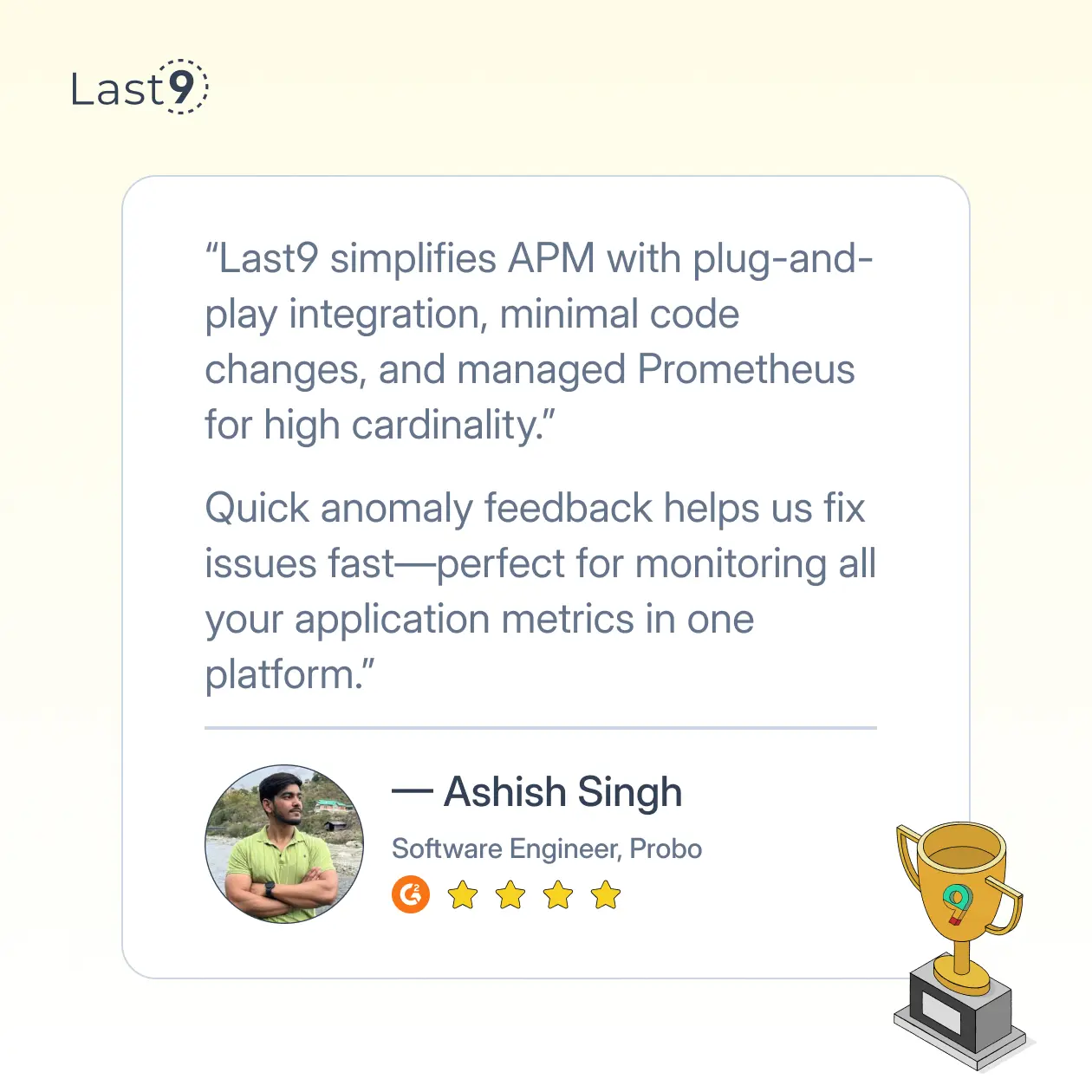As systems grow more distributed and complex, having a reliable way to monitor and understand what's happening across your infrastructure becomes essential.
Telemetry data provides the visibility needed to keep everything running smoothly, whether you're managing microservices, cloud environments, or sophisticated AI systems.
In this guide, we’ll break down what a telemetry data platform is, why it’s so important, and how you can choose the right one to meet your needs.
What is a Telemetry Data Platform?
At its core, a telemetry data platform is a centralized system that collects, processes, and visualizes telemetry data from various sources across your infrastructure.
This data can include logs, metrics, traces, and events, all of which are essential for understanding system health and performance.
Telemetry data platforms enable you to monitor and analyze the behavior of systems in real-time, providing insights into performance bottlenecks, resource utilization, errors, and more.
These platforms often integrate with observability and monitoring tools to give you a unified view of your environment.
Types of Telemetry Data
To build a comprehensive understanding of telemetry data, it's important to look at the different types:
- Logs – These are detailed records of events that occur within a system. Logs can help identify issues and track user behavior or system activity.
- Metrics – Quantitative data that measures system performance, such as response time, CPU usage, memory consumption, or throughput. Metrics give you a high-level overview of system health.
- Traces – These provide visibility into the flow of requests across different services or components. Tracing allows you to identify latency issues or bottlenecks in distributed systems.
- Events – Specific occurrences in the system, such as a deployment or a state change. Events are useful for tracking significant changes or incidents.
Why Telemetry Data Platforms Are Essential
With the increase in distributed systems, containers, microservices, and cloud infrastructure, it’s no longer enough to rely on traditional monitoring tools. Telemetry data platforms are essential for several reasons:
1. Real-Time Insights
Telemetry platforms provide real-time insights into system behavior. This means that instead of waiting for performance issues to become noticeable to users, you can detect and address potential problems proactively.
2. Improved Troubleshooting and Debugging
Telemetry data makes it much easier to track down the root causes of issues. With traces, logs, and metrics all connected, you can quickly identify where things are going wrong and take the necessary steps to fix them.
3. Scale and Flexibility
As systems scale, their complexity grows. Telemetry platforms help manage this growth by offering the flexibility to monitor a wide range of components, whether you’re working with cloud-native applications, on-premises systems, or everything in between.
4. Enhanced Security
Telemetry platforms also help detect anomalous behavior or potential security threats by collecting data about system activity. Monitoring the health of your systems and infrastructure can reveal early signs of compromise or misconfiguration.
5. Optimization
The platform provides detailed insights into how your resources are being utilized, enabling you to optimize performance. This includes reducing downtime, improving resource allocation, and ultimately enhancing the user experience.
Key Features of a Telemetry Data Platform
When evaluating telemetry data platforms, there are several key features to consider:
1. Scalability
A good telemetry platform should be able to scale easily as your system grows. This includes handling larger volumes of data, more services, and more users without compromising performance or reliability.
2. Data Aggregation and Correlation
Telemetry platforms should be able to aggregate and correlate data from various sources, whether it’s logs, traces, or metrics. This aggregation allows for comprehensive insights, making it easier to troubleshoot and optimize.
3. Advanced Analytics
The ability to run complex queries and visualize your telemetry data is essential for gaining actionable insights. Platforms that offer advanced analytics tools can help identify trends, patterns, and outliers.
4. Integration with Other Tools
A telemetry platform should integrate well with other monitoring, logging, and alerting systems. This ensures that your data flows seamlessly across the tools you’re already using, whether it’s cloud observability, APM tools, or CI/CD pipelines.
5. Security and Compliance
Since telemetry data often contains sensitive information, security, and compliance are paramount. Look for platforms that offer robust encryption, access controls, and compliance with standards like GDPR or HIPAA.
Best Practices for Implementing a Telemetry Data Platform
1. Define Your Metrics Early
Before implementing a telemetry data platform, it’s crucial to define what success looks like for your system.
Identify which metrics matter most to your team. Understanding these metrics will help you focus your efforts on the data that provides the most valuable insights.
2. Start with Simple Use Cases
If you’re new to telemetry data platforms, start by monitoring key infrastructure components like databases, web servers, and application performance.
Once you have a solid foundation, you can expand your monitoring to more complex systems.
3. Use Correlation to Connect the Dots
Don’t treat logs, traces, and metrics as separate entities. Instead, correlate them to gain a more complete picture of system health.
For example, if you see a spike in error logs, check the corresponding traces to see if they reveal a problem in your distributed services.
4. Automate Alerts and Incident Response
Configure automated alerts for critical metrics and system anomalies. This can significantly reduce mean time to recovery (MTTR) by alerting the right team members quickly when something goes wrong.
5. Monitor Cost Efficiency
While it's easy to get carried away with monitoring everything, it’s important to be mindful of the costs associated with storing and analyzing telemetry data.
Make sure your telemetry data platform offers cost-effective solutions for large volumes of data.
How to Choose the Right Telemetry Data Platform
Choosing the right telemetry data platform for your needs requires careful consideration.
Here’s a step-by-step guide:
- Assess Your Needs – What types of systems and services do you need to monitor? Are you focused on microservices, cloud infrastructure, or AI systems? The right platform should be able to handle the complexity of your environment.
- Evaluate Scalability – Can the platform scale with your growing needs? Whether you’re managing a handful of services or thousands, the platform should be able to handle it.
- Consider Integration – Does the platform integrate with the other tools and systems in your stack? A hassle-free integration process will save you time and effort.
- Look for Usability – The platform should be user-friendly for your team. A steep learning curve can slow down adoption and decrease efficiency.
- Focus on Support and Documentation – Ensure that the platform provides strong support and comprehensive documentation. This will make troubleshooting and implementation easier.

Why Last9 Is the Solution You Need
Trusted by industry leaders like Probo, Games24x7, CleverTap, and Replit, Last9 is a Telemetry Data Platform that optimizes cloud-native monitoring by balancing performance, cost, and user experience.
Our platform seamlessly integrates with OpenTelemetry, Prometheus, and more to unify metrics, logs, and traces—efficiently managing high-cardinality data.
You gain deeper insights through our Control Plane’s smart alerting and real-time metrics, making it easier to manage complex systems. The platform gives you the granular visibility needed to troubleshoot workflows, track model performance, and optimize system behavior across the board.
Whether you're running AI systems or microservices architectures, Last9 is built to handle telemetry at scale without sacrificing performance or driving up costs.
Book some time with us if you'd like to know more or try it for free today!



